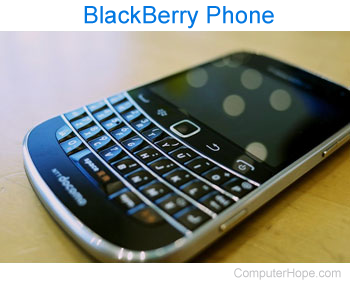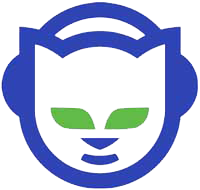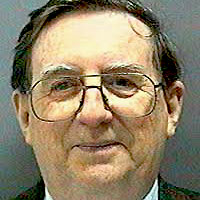Computer history - 1999
Major computer events in 1999

The first Wiki was introduced with WikiWikiWeb on March 25, 1999.
1999 computer and technology top terms
The following are some top computer and technology-related terms in alphabetical order that were introduced or popularized in 1999.
New computer products and services introduced in 1999
Intel released the Celeron 366 MHz and 400 MHz processors on January 4, 1999.

RIM released the BlackBerry and BlackBerry OS (operating system) on January 19, 1999.
The TiVo was introduced at CES (Consumer Electronics Show) in January 1999.
Adobe Photoshop 5.5 was released in February 1999.
Gedit was released on February 12, 1999.
AMD released its K6-III processors on February 22, 1999, with speeds of 400 MHz or 450 MHz and bus speeds of 66 MHz to 100 MHz. It also featured an on-die L2 cache.
The Intel Pentium III 500 MHz was released on February 26, 1999.
RDF Site Summary, the first version of RSS, was created by Ramanathan Guha at Netscape in March 1999.
MHTML (MIME Encapsulation of Aggregate Documents, such as HTML) was proposed in March 1999.
Apple Mac OS X was released for servers on March 16, 1999.
The MMORPG (Massively-Multiplayer Online Role-Playing Game) EverQuest was released on March 16, 1999.
Microsoft released Internet Explorer 4.5 and later Internet Explorer 5.0 on March 18, 1999.
Microsoft introduced the IntelliMouse Explorer, an optical computer mouse, and the IntelliEye on April 19, 1999.
The first USB (Universal Serial Bus) flash drives were developed in April 1999 at M-Systems (now SanDisk), an Israeli company, by Amir Ban, Dov Moran, and Oron Ogdan.
The original Team Fortress (Team Fortress Classic) was released in April 1999.
Kyocera released the Visual Phone VP-210 in May 1999, the first cell phone on the commercial market to feature a camera with a 110,000-pixel resolution.
Microsoft Windows 98 SE was released on May 5, 1999.
The Intel Pentium III 550 MHz was released on May 17, 1999.
On May 19, 1999, SETI@Home, which enabled users all over the world to help search for extraterrestrial intelligence, was launched by the SSL (Space Sciences Laboratory) at UC Berkeley.
VMware released its first program, called VMware Workstation, in May 1999.
Counter-Strike was developed as a mod for the Half-Life game and released on June 19, 1999.
AMD introduced the Athlon processor series on June 23, 1999. The Athlon was produced for the next six years in speeds ranging from 500 MHz up to 2.33 GHz.
Apple introduced the Apple Airport and iBook on July 21, 1999.
The Intel Pentium III 600 MHz was released on August 2, 1999.
AMD introduced the AMD Athlon processors and Socket 462 socket on August 9, 1999.
NVIDIA introduced the GPU and GeForce video card on August 31, 1999.
Adobe InDesign was introduced on August 31, 1999.
GNU Privacy Guard was released on September 7, 1999.
The Intel Pentium III 533B and 600B MHz was released on September 27, 1999.
NVIDIA released the GeForce 256 GPU (Graphics Processing Unit) on October 11, 1999. It was considered the first GPU worldwide and fully supported DirectX 7. It also featured 32 MB of DDR (Double Data Rate) memory.
The Intel Pentium III Coppermine series was introduced on October 25, 1999.
Grand Theft Auto 2 was released in October 1999 by DMA Design.
Unreal Tournament, also called UT99, was released on November 30, 1999, for the PC (personal computer), featuring deathmatch, capture the flag, and last man standing gameplay modes. It was praised for its great graphics, gameplay, and multiplayer gaming features.
The CVE (Common Vulnerabilities and Exposures) was introduced in 1999.
Microsoft released Windows CE 3.0.
AMD released the Slot A processor and slot.
Hushmail was released in 1999.
Avi Yablonka, Yaron Baratz, and Yuval Aflalo founded Cellebrite in 1999.
GameMaker Studio was released by YoYo Games.
Microsoft introduced WMV (Windows Media Video) with WMV 7.
Microsoft released FrontPage 2000.
Microsoft released Word 2000 in 1999.
BeanShell was introduced.
Corel Linux, also known as Corel Linux OS, was a Debian-based Linux distribution released at the end of 1999.
The FlexATX motherboard form factor specification was introduced by Intel.
Apple released iMovie for Apple iOS and macOS devices in 1999.
IBM introduced the first Microdrive, the world's physically smallest hard drive capable of storing 170 MB.
REST (Representational State Transfer) and HTTP (HyperText Transfer Protocol) 1.1 were introduced in 1999.
Video card sideband addressing was added to the Linux kernel in 1999 with the introduction of the AGPgart kernel module.
Twine, the open-source visual IDE (Integrated Development Environment) for creating interactive stories, was introduced in 1999.
The V.91 standard was published in 1999.
In 1999, IBM repackaged PC-DOS as PC-DOS 2000, making PC-DOS Y2K compliant.
Dell released the XPS T series in 1999.
Computer and technology-related events in 1999
The Victoria's Secret fashion show became the first major webcast on the Internet, attracting over 1.5 million visitors on February 5, 1999. Unfortunately, because of its popularity, not everyone could view the webcast.
The Melissa virus, created by David Smith, began infecting computers on March 26, 1999, and quickly spread around the globe over e-mail in hours. The virus became one of the fastest-spreading viruses in history and caused an estimated $80 million in damage.
SyQuest Technology Inc. announced the sale of all its U.S. assets to Iomega Corporation for approximately $9.1 million was completed on April 22, 1999.
VIA Technologies acquired Cyrix from Texas Instruments on June 30, 1999.
The Common Unix Printing System was released in June 1999.
Microsoft Corp. and RadioShack announced a strategic alliance on November 11, 1999, to accelerate the adoption of Web technologies and consumer connections to the Internet. Under the five-year agreement, the companies would establish a Microsoft "store within a store" in 7,000 RadioShack locations across the nation. Customers could see demonstrations and sign up for MSN (Microsoft Network) dial-up or broadband Internet access.
On December 1, 1999, the most expensive Internet domain name, business.com, was sold by Marc Ostrofsky for $7.5 million. The domain was later sold again to R.H. Donnelley for $345 million on July 26, 2007.
Oak Technology announced it would acquire Xionics on July 29, 1999.
Pyra Labs launched the Internet service Blogger on August 23, 1999.
Tektronix announced it would sell its color printing business to Xerox on September 22, 1999.
Phoenix acquired Sand Microelectronics on September 28, 1999.
IEEE (Institute of Electrical and Electronics Engineers) introduced 802.11b in September 1999 and WEP (Wired Equivalent Privacy) with Wi-Fi.
Japan's NEC Corp. announced on November 3, 1999, that it was restructuring Packard Bell NEC unit, which resulted in 80% layoffs and its withdrawal from the U.S. retail computer market.

Jawbone was founded on December 1, 1999.
RIAA (Recording Industry Association of America) sued Napster on December 7, 1999.
Jeff Bezos of Amazon.com was named Time Person of the Year on December 27, 1999.
In 1999, IBM's ADSM (ADSTAR Distributed Storage Management) was re-branded to Tivoli Storage Manager.
TIME magazine included Philo Farnsworth in "The TIME 100: The Most Important People of the Century."
The development of the D programming language started in 1999.
The Centaur Technology branch of IDT was sold to VIA in 1999.
SiS acquired Rise Technology at the end of 1999.
Guillemot acquired Thrustmaster.
Iona Technologies acquired Aurora Technologies Inc.'s outstanding stock shares in 1999.
Orchid Technology was no longer in business as of April 1999.
Practical Peripherals went out of business in 1999.
SMIL (Synchronized Multimedia Integration Language) was first proposed in 1999.
Transport Layer Security was first defined in 1999.
Microsoft first demonstrated the Active Directory in 1999 when demonstrating Windows 2000.
PEAR (PHP Extension and Application Repository) was introduced in 1999.
The Proof-of-Work concept was named in 1999 by researchers Markus Jakobsson and Ari Juels.
RDRAM (Rambus Dynamic Random-Access Memory) became available for computers in 1999.
Scott McNealy was quoted as saying, "You have zero privacy anyway. Get over it."
Sony and Philips Electronics introduced SACD (Super Audio CD) in 1999.
LTSP (Linux Terminal Server Project) was formed in 1999.
The file system CDfs (Compact Disc File System) was introduced in Linux systems on August 21, 1999, and exports all tracks and boot images on a CD (Compact Disc) as normal files.
A group of cDc (Cult of the Dead Cow) members created Hacktivismo in 1999.
The Chernobyl virus was first detected in 1999.
The SVG (Scalar Vector Graphic) file type was defined by the World Wide Web Consortium in 1999.
Computer companies and organizations founded in 1999
HP (Hewlett-Packard) founded APOLLO on January 6, 1999, a subsidiary of HP to sell sub-$100 printers.
QuinStreet was founded on April 1, 1999, by Douglas Valenti.
Napster was founded on June 1, 1999.
GameSpy was founded in October 1999.
Alibaba was founded in 1999 by Jack Ma and his team of 17 friends and students in Hangzhou, China.
Aspire International was founded in 1999.
Calcomp Graphics was founded in 1999.
Capterra was founded in 1999 by Michael Ortner.
Conexant was founded in 1999.
D-Wave Systems was founded in 1999.
Disney Interactive Media Group was founded in 1999.
EVGA was founded in 1999.
Fujitsu Siemens Computers was founded in 1999.
Infineon was founded as a spin-off company from former company Siemens AG in 1999.
IOGEAR was founded in 1999.
ITK was founded in 1999.
Linden Lab was founded in 1999.
Mellanox Technologies was founded in 1999.
Quanmax was founded in 1999.
RingCentral was founded in 1999.
Salesforce was founded in 1999.
Shutterfly was founded in 1999.
SiPix was founded in 1999.
SolarWinds was founded in 1999.
SONICblue was formed in 1999 after the merger between Diamond Multimedia and S3.
Spacial was founded in 1999.
Thermaltake was founded in 1999.
TiVo was founded in 1999.
The non-profit organization WCE (World Computer Exchange) was founded by Timothy Anderson in 1999.
Zalman was founded in 1999.
Zhone Technologies was founded in 1999.
Computer company events in 1999
@Home bought Excite for $6.7 billion on January 19, 1999.
Yahoo! bought GeoCities for $3.65 billion on January 28, 1999.
AST Research was acquired in January 1999 by Beny Alagem, the founder of Packard Bell, who created AST Computer.
Yahoo! purchased Broadcast.com for $5.7 billion on April 1, 1999.
Howard Lance, chief executive officer of Astec, announced that Astec was now 100 percent owned by Emerson Electric Company and would operate as a wholly owned subsidiary on April 7, 1999.
Microsoft acquired Access software on April 19, 1999.
Sony introduced its robot dog AIBO (Artificial Intelligence Robot) on May 11, 1999.
Mattel, Inc. completed its merger with TLC (The Learning Company), and TLC became a division of Mattel on May 13, 1999.
AOL (America Online) purchased Nullsoft on June 1, 1999.
Ascend was sold to Lucent Technologies in June 1999.
Mouse Systems moved all operations to its parent company, KYE International Corporation, manufacturer of Genius name-brand products, in June 1999.
National Semiconductor announced it would exit the PC processor market, and on June 30, 1999, VIA Technologies announced it would acquire Cyrix from National Semiconductor.
IBM acquired Sequent Computer Systems in July 1999.
The Hayes brand name was purchased by Zoom in July 1999. They still use the Hayes name on some of its products.
EarthWeb acquired Micro House International Inc. on August 9, 1999.
Willis Stein and Partners announced on August 23, 1999, that it would acquire Aavid in a merger for $25.50 per share in cash, or approximately $260 million.
RealNetworks merged with Xing Technology Corporation in August 1999, the makers of AudioCatalyst.
SGI created a separate Cray research business unit in August 1999 to focus on the unique requirements of high-end supercomputing customers.
On September 24, 1999, S3 Incorporated and Diamond Multimedia Systems announced the merger of the two companies was approved by both S3 and Diamond's shareholders.
Earthlink acquired Mindspring in September 1999.
Centaur Technology was purchased by VIA Technologies in September 1999.
American Megatrends Inc. announced on October 20, 1999, its MegaRAID Enterprise 1500-H, a super-high performance 64-bit PCI (Peripheral Component Interconnect) Ultra2 LVD SCSI RAID (Redundant Array of Independent Disks) controller for enterprise-class servers. The product helped Unisys Corp. achieve a new transaction processing performance world record for Microsoft SQL (Structured Query Language) server and non-clustered Intel/NT systems with recently published TPC-C benchmarks.
Adaptec announced it would acquire DPT for $235 million on November 1, 1999.
Babbage's was renamed to GameStop in 1999.
Infogrames purchased Accolade in 1999.
Activision acquired worldwide publishing rights to release Alundra 2 in 1999, the highly anticipated sequel to the acclaimed PlayStation game console title Alundra.
Aims Labs went out of business in 1999.
Amazon agreed to buy Accept.com, Alexa (Alexa.com), and Exchange.com.
ARK Logic went out of business in 1999.
AST Research was dissolved, and AST Computer was formed in 1999.
Calcomp Technology, Inc. and its subsidiaries shut down all its operations and transferred all its businesses in 1999.
Dot Hill Systems acquired Artecon for $57 million in May 1999.
Genoa Systems went out of business in 1999.
Rise Technology was acquired by SiS at the end of 1999.
RSAC (Recreational Software Advisory Council) became part of ICRA (Internet Content Rating Association) in 1999.
Sun Microsystems acquired StarDivision, the developers behind the StarOffice suite of software.
Total Entertainment Network was renamed to Pogo.com in 1999.
The MacNeal-Schwendler Corporation was renamed to MSC Software in 1999.
The Mining Company was renamed to About.com in 1999.
The Centaur Technology branch of IDT (WinChip) was sold to VIA in 1999.
Yahoo! Pager was renamed to Yahoo! Messenger in 1999.
Intel created the Media & Signaling Division, known as Dialogic, in 1999.
Internet domains that came online in 1999
The domain baidu.com came online on October 11, 1999.
Computer-related TV shows and movies released in 1999
The Matrix movie was released on March 31, 1999. The movie is about a hacker named Neo who goes into a forbidding underworld and discovers the shocking truth about an evil cyber-intelligence.
Pirates of Silicon Valley was released on June 20, 1999. It is a biography movie about the history of Apple and Microsoft.
Office Space, a comedy movie about three company workers who hate their jobs and decide to rebel against their greedy boss.
Discontinued products and services in 1999
DIVX (DIgital VIdeo eXpress) discs and format were discontinued on June 16, 1999.
Computer pioneer deaths in 1999

Robert Lansdown passed away on February 17, 1999 (Age: 70).
Paul DeMaine passed away on May 13, 1999 (Age: 74).
William Stevens passed away on September 1, 1999 (Age: 48).
David Huffman passed away on October 7, 1999 (Age: 74).
Nicholas Metropolis passed away on October 17, 1999 (Age: 84).
